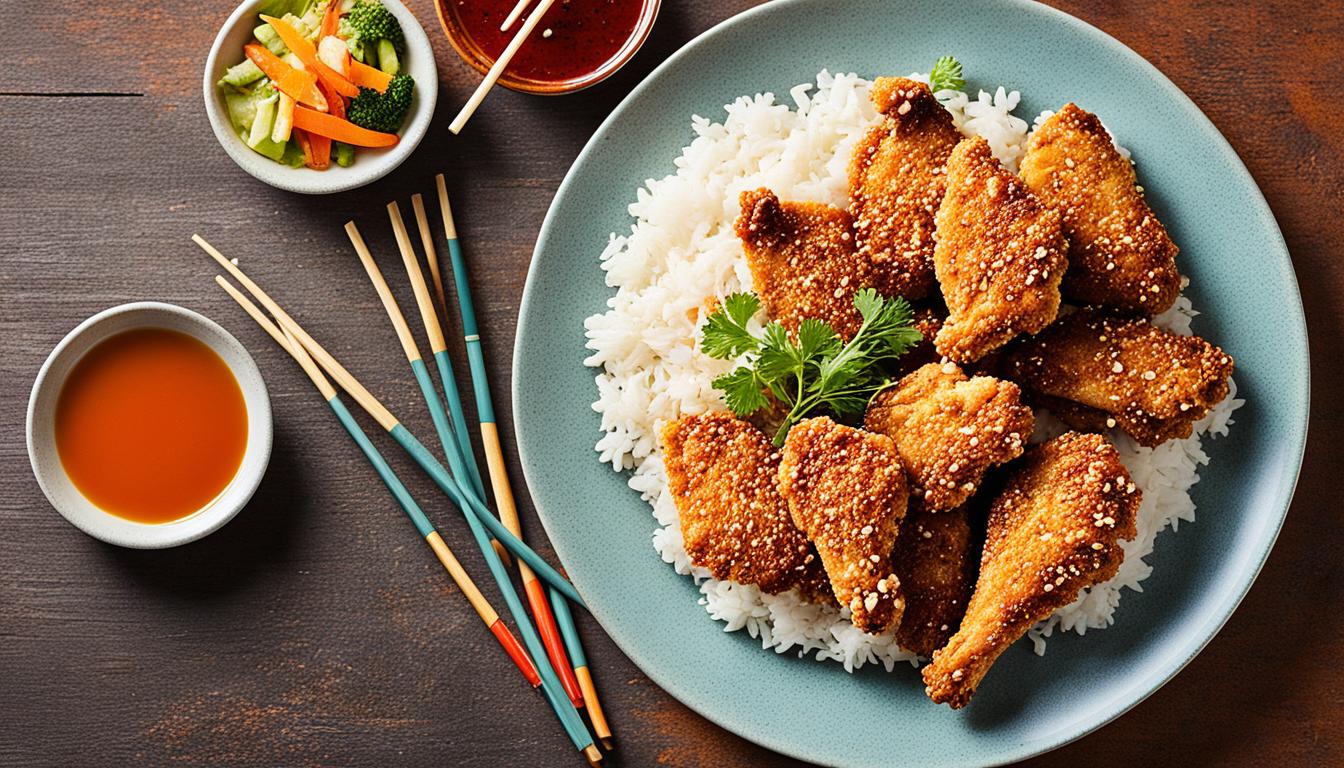Are you a gluten-free foodie looking to indulge in the crispy and flavorful goodness of Japanese-style fried chicken? We have exciting news for you! In this article, we will share tantalizing recipes and show you how to make gluten-free Karaage that rivals its wheat-flour counterpart. Get ready to savor every bite of this beloved Japanese dish, without compromising your dietary needs.
Japanese-style fried chicken, known as Karaage, is a delectable treat loved by many. However, the traditional recipe calls for soy sauce and wheat flour, making it off-limits for those following a gluten-free diet. But fear not! We have unlocked the secrets to creating gluten-free Karaage that will leave your taste buds dancing with joy.
What Makes It Gluten Free?
Normally, Karaage is marinated with soy sauce and dusted with flour or potato starch. However, to make it gluten-free, gluten-free soy sauce is used for marinating, and a combination of rice flour and potato starch is used for coating the chicken. The potato starch gives the chicken a crisp texture, while the rice flour creates a crunchy outer layer. By using these gluten-free ingredients, you can enjoy Karaage without sacrificing flavor or texture.
Japanese cuisine is known for its diverse and delicious flavors. From sushi to ramen, it offers a wide range of dishes that cater to various dietary preferences. For those following a gluten-free diet, finding suitable meal options can sometimes be challenging. However, with a little creativity and some knowledge of gluten-free cooking, you can still enjoy the rich flavors of Japanese cuisine.
Karaage, a popular Japanese-style fried chicken dish, is a prime example. Traditionally, Karaage is made by marinating chicken in soy sauce and coating it with flour or potato starch before frying it to perfection. However, the use of wheat flour in the coating makes it unsuitable for those who need to avoid gluten. But fear not! With a few simple substitutions, you can create a gluten-free version of this beloved dish.
Gluten-free Karaage starts with marinating the chicken in gluten-free soy sauce. By using this alternative, you can infuse the chicken with the same savory flavors and richness that soy sauce brings. As for the coating, a combination of rice flour and potato starch works wonders. The potato starch adds that desired crispiness to the chicken, while the rice flour creates a crunchy outer layer that replicates the texture of traditional Karaage.
When it comes to gluten-free cooking, it’s all about finding the right substitutes without compromising on taste and texture. By making these small adjustments, you can enjoy a gluten-free version of Japanese cuisine that is just as delicious and satisfying. So go ahead and give it a try – you won’t be disappointed!
Tips for the Best Gluten Free Karaage
To achieve the best results with gluten-free Karaage, we have three essential tips for you.
- Skin-on chicken thighs: For an authentic and flavorful experience, we recommend using skin-on chicken thighs. The chicken skin helps to keep the meat moist and adds a delicious taste.
- Ratio of rice flour to potato starch: To achieve a crispy crust, the ratio of rice flour to potato starch should be around 4 to 1. You can adjust the ratio according to your preference. This combination of ingredients creates a crunchy outer layer that perfectly complements the juicy chicken.
- Double frying: To maintain the crunchiness of your gluten-free Karaage, double frying is crucial. The first fry cooks the chicken, while the second fry ensures it becomes extra crispy. This technique ensures that each bite is filled with that satisfying texture we all love.
By following these tips, you’ll be able to create gluten-free Karaage that is just as delicious and satisfying as the traditional recipe. The combination of skin-on chicken thighs, the right ratio of rice flour to potato starch, and double frying will result in a mouthwatering dish that will impress both gluten-free and non-gluten-free eaters alike.
Pro Tips – How to Enjoy Gluten Free Karaage
Now that you’ve mastered the art of making gluten-free Karaage, it’s time to explore different ways to savor this flavorful dish.
Traditionally, Karaage is served with lemon wedges that add a touch of tanginess to each bite. For a creamy and savory twist, try dipping the gluten-free Karaage in Japanese mayonnaise, a perfect complement to its crispy coating.
For a lighter and refreshing option, consider dipping the Karaage in ponzu sauce. This citrus-based soy sauce not only enhances the flavors but also provides a zesty kick. To enhance its freshness, serve the gluten-free Karaage with grated daikon and green onions.
Whether you decide to serve it as an appetizer or a main course, gluten-free Karaage is sure to be a crowd-pleaser. Dive into the world of Japanese flavors with these gluten-free meal ideas, and elevate your dining experience!
